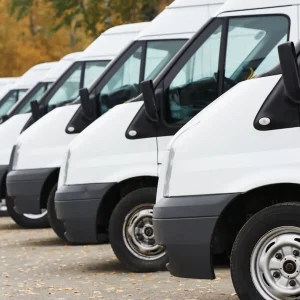The Editor’s Choice Award for 2017 goes to the Renault Trafic, not only for its all-round quality and the innovative features it has brought to market but for the extraordinary reach of dits influence over the medium van sector.
The current Trafic has now provided the blueprint not only for its long-standing collaborator the Vauxhall Vivaro but also for Fiat Professional’s new Talento and most recently the NV300 from Nissan, Renault’s Alliance partner.
Even in an age of joint ventures the Renault Trafic’s impact on the light commercial vehicle industry continues to be exceptional.
The Trafic serves to highlight how far medium van design has progressed over the past 30 years from the days of the original cheese wedge-shaped version. The current model is a well thought-out package with good road manners, a decent standard of equipment and, above all, impressive and technologically sophisticated 1.6-litre diesel engines.
Renault’s partners clearly believe they have chosen the best model on which to underpin their own vans.
A previous winner of What Van?’s Innovation Award, the blind spot mirror fitted to the passenger sun visor is a simple yet brilliant idea, enabling the driver to spot cyclists sneaking up on the van’s nearside and avoid squashing them.
Another clever feature is a load-through facility created by lifting a hatch at the bottom of the passenger seat. It allows you to slide extra-long ladders, planks and pipes aboard without the need to have them sticking out through the back doors or secure them to a roof rack.
All van drivers look for a cab interior with plenty of storage space and the Trafic excels in this regard with a variety of shelves, bins and cubbyholes not to mention the ability to flip down the back of the inboard passenger seat and transform it into a desk with a compartment for a laptop.
With its twin turbo technology, stop/start, and Energy Smart Management, the Trafic makes economical sense for fleets as well as small businesses and owner-drivers.
Renault put Euro6-compliant engines into the Trafic in July, well in advance of the September deadline, and at the same time introduced a Thatcham-approved alarm as standard on all models to allow them to meet the higher security rating outlined in the latest UK insurance criteria applicable to commercial vehicles. It also added the Energy dCi 95 engine to the range for the first time.
Utilising a selective catalytic reduction (SCR) system and AdBlue, the Trafic’s range of Euro6 engines are 5hp more powerful than their Euro5 predecessors. They encompass the single turbo dCi 95 and dCi 120 engines, together with the twin turbo Energy dCi 125 and Energy dCi 145 engines.
Renault is to launch an enhanced traction X-track derivative of the Trafic in the first quarter of 2017. This offers better hold and control in mild to medium off-road conditions than the Grip Extend system introduced on the van in 2013.
X-track employs 4×2 transmission in conjunction with a limited slip differential that is permanently activated. The vans also get metal underbody protection, a sump guard, all-weather tyres and ground clearance raised by 30mm.
Highly Commended: Volkswagen Amarok

A special nod this year goes to the facelifted, Euro6 VW Amarok pick-up.
It’s not often that a light commercial vehicle can be described as exhilarating to drive but the Amarok fits the bill.
The decidedly upmarket LCV is now offered solely with a 3.0-litre V6 TDI powertrain. The new Euro6 Amarok engine, with outputs of 163hp, 204hp and a mighty 224hp, replaces the 2.0-litre TDI with outputs of 140hp and 180hp.
Despite the power uplift, however, Volkswagen claims the new engine is more economical than its predecessor: 36.2mpg for the 224hp versus 35.3mpg on the 180hp.
The most powerful engine comes wedded to a superb eight-speed automatic transmission, the mid-range unit has a choice of the auto or a six-speed manual gearbox, and the 163hp is manual only.





